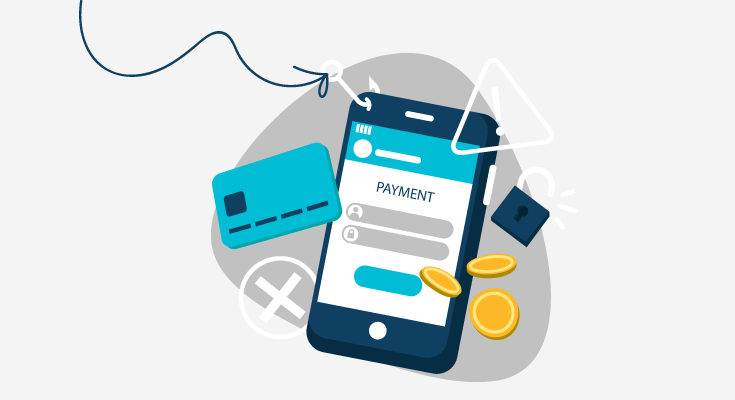Real-Time Payment Fraud

In today’s fast-paced digital world, traditional payment methods are gradually being replaced by real-time payment systems, offering unprecedented speed and convenience.
However, with the rise of real-time payments comes the increased risk of fraudulent activities. Understanding the dynamics of real-time payments and the intricacies of real-time fraud is essential for businesses and consumers alike.
Introduction to Real-time Payments
Real-time payments refer to transactions that are processed instantly, allowing funds to be transferred from one party to another within seconds. Unlike traditional payment methods, which may take several days to complete, real-time payments occur in real-time, providing immediate access to funds.
What Are Real-time Payments?
Real-time payments are characterized by their instantaneous nature, enabling individuals and businesses to transfer money quickly and efficiently. These transactions typically occur through electronic payment systems, bypassing the delays associated with traditional banking processes.
Advantages of Real-time Payments
- Speed and Convenience
One of the primary advantages of real-time payments is their speed and convenience. Whether it’s paying bills, transferring funds to family members, or making online purchases, real-time payments allow transactions to be completed in a matter of seconds, eliminating the need to wait for days for funds to clear.
- Improved Cash Flow
Real-time payments also contribute to improved cash flow management for businesses. By receiving payments instantly, businesses can better manage their finances and allocate resources more effectively, ultimately enhancing their overall operational efficiency.
- Enhanced Customer Experience
Furthermore, real-time payments offer an enhanced customer experience by providing immediate gratification. Customers no longer have to wait for days for transactions to be processed, leading to higher levels of satisfaction and loyalty.
- Understanding Real-time Fraud
While real-time payments offer numerous benefits, they also present unique challenges, particularly in terms of fraud prevention. Real-time fraud refers to fraudulent activities that occur during instant transactions, exploiting vulnerabilities in the payment system to perpetrate illicit schemes.
Definition and Types of Fraudulent Activities
Real-time fraud encompasses a wide range of fraudulent activities, including identity theft, account takeover, and unauthorized transactions. Cybercriminals exploit the speed and anonymity of real-time payments to conduct fraudulent transactions, often leaving victims with little time to react.
Challenges in Detecting Real-time Fraud
Detecting and preventing real-time fraud poses significant challenges for businesses and financial institutions. Several factors contribute to the complexity of fraud detection in real-time payment systems.
- Time Sensitivity
Real-time fraud detection requires rapid decision-making, as transactions must be evaluated and authorized within milliseconds. The time-sensitive nature of real-time payments leaves little room for error, necessitating robust fraud detection mechanisms.
- Volume and Velocity of Transactions
The sheer volume and velocity of transactions in real-time payment systems make it challenging to identify fraudulent activities amidst legitimate transactions. Traditional fraud detection methods may struggle to keep pace with the rapid influx of transaction data, leading to increased false positives and false negatives.
- Sophistication of Fraudulent Techniques
Cybercriminals continuously evolve their tactics to evade detection, employing sophisticated techniques such as social engineering, malware, and phishing scams. Detecting these advanced forms of fraud requires advanced analytics and machine learning algorithms capable of detecting patterns and anomalies in real-time.
Strategies to Mitigate Real-time Fraud
Mitigating real-time fraud requires a multifaceted approach that combines technology, analytics, and collaboration among stakeholders.
- Utilizing Advanced Analytics
Advanced analytics tools enable businesses to analyze large volumes of transaction data in real-time, identifying patterns indicative of fraudulent behavior. By leveraging predictive analytics and machine learning algorithms, organizations can detect and prevent fraud more effectively.
- Implementing Machine Learning Algorithms
Machine learning algorithms play a crucial role in real-time fraud detection by automatically identifying suspicious patterns and anomalies in transaction data. These algorithms continuously learn from historical data, allowing them to adapt to evolving fraud tactics and improve detection accuracy over time.
- Employing Behavior Monitoring Systems
Behavior monitoring systems track user behavior and transaction patterns to detect deviations from normal activity. By establishing baseline behavior profiles for individual users, these systems can identify anomalies indicative of fraudulent behavior and trigger alerts for further investigation.
- Collaborative Efforts and Partnerships
Addressing the challenges of real-time fraud requires collaborative efforts and partnerships among financial institutions, technology providers, and regulatory bodies.
- Cooperation Among Financial Institutions
Financial institutions must share information and best practices to collectively combat real-time fraud. By establishing collaborative networks and sharing data on fraudulent activities, institutions can enhance their ability to detect and prevent fraud more effectively.
- Engagement with Regulatory Bodies
Regulatory bodies play a vital role in overseeing real-time payment systems and establishing standards for fraud prevention. Financial institutions must engage with regulatory authorities to ensure compliance with regulations and implement robust security measures to protect against fraud.
Future Outlook of Real-time Payments and Fraud Prevention
As real-time payment systems continue to evolve, so too will the tactics used by fraudsters. However, advancements in technology and regulatory frameworks offer hope for improved fraud prevention in the future.
- Technological Innovations
Emerging technologies such as blockchain and biometrics hold promise for enhancing security and reducing fraud in real-time payment systems. By leveraging decentralized ledger technology and biometric authentication methods, organizations can strengthen the integrity of transactions and mitigate the risk of fraud.
- Regulatory Changes
Regulatory bodies are increasingly focused on enhancing cybersecurity and fraud prevention measures in the financial sector. Future regulatory changes may impose stricter requirements on financial institutions regarding fraud detection and prevention, driving greater investment in security infrastructure and risk management practices.
Conclusion
In conclusion, real-time payments offer unparalleled speed and convenience, revolutionizing the way we transact in the digital age. However, the rise of real-time payments also brings new challenges, particularly in terms of fraud prevention.
By understanding the dynamics of real-time payments and implementing robust fraud detection mechanisms, businesses and financial institutions can safeguard against fraudulent activities and ensure the integrity of the payment ecosystem.
FAQs
Real-time payments are processed instantly, whereas traditional payment methods may take several days to complete.
Common types of real-time fraud include identity theft, account takeover, and unauthorized transactions.
Businesses can mitigate the risk of real-time fraud by utilizing advanced analytics, implementing machine learning algorithms, and employing behavior monitoring systems.
Collaboration among financial institutions and regulatory bodies enables the sharing of information and best practices, enhancing the collective ability to detect and prevent fraud.
Regulatory bodies oversee real-time payment systems and establish standards for fraud prevention, ensuring compliance and driving improvements in security measures.













